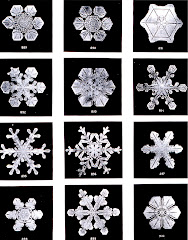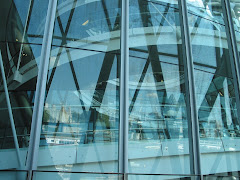Julie Phillips Brown
Review of:
Elisabeth W. Joyce, “The Small Space of a Pause”: Susan Howe’s Poetry and the Spaces Between. Lewisburg: Bucknell University
Readers of Susan Howe’s poetry will appreciate the extended discussion of the poetics of space in Elisabeth W. Joyce’s “The Small Space of a Pause”: Susan Howe’s Poetry and the Spaces Between” (Hardcover, $65.00 from Bucknell University Press). “The Small Space of a Pause” is the first of two very recent full-length critical studies devoted to Howe’s work (the other is Will Montgomery’s The Poetry of Susan Howe: History, Theology, Authority from Palgrave Macmillan). Joyce argues that Howe’s poetry explodes conventional approaches to charting space—namely, mapping, perspective, surveying, geometry, graphic design, gardening, landscape, and “taskscape,” a term borrowed from anthropology—in order to open an alternative, “third space,” where “Cartesian binaries that persist in maintaining hierarchies that reinforce discrimination based on gender (and race, class, etc.)” can be rewritten and redressed (197). The liminal third spaces that predominate Howe’s poetry include the margins of the page, the edges of gardens, landscapes, and the American wilderness, singularities, the silences in history, and the poet’s well-documented visual and syntactic disruptions of language. Joyce demonstrates that each of Howe’s third spaces serves the poet’s attempt to “presence” and gather a speaking position for herself (as well as other women silenced by history) from the fragments of a “nomadic and fractured self” (234).
The breadth of Joyce’s undertaking is impressive. The author displays a deep familiarity with a notoriously difficult canon, and the study draws on a staggering variety of discourses in its discussions of space. Taking its cue from Howe’s poems, “The Small Space of a Pause” is structured as a third space itself, unfolding organically through one corpus of poems to the next like Duchamp’s hinge-picture. The first chapter construes Howe’s citational, polyphonic sounding of the wilderness as the poet’s vexed attempt to establish an authorial self from a heap of fragmented and fraudulent source materials. In the next three chapters, Joyce argues that Howe’s poems “vitiate” the strategies of mapping, perspective, surveying, and geometry from within in order to undermine the binary oppositions of gender these “objective” lenses impose on the feminine landscape. Visual configurations of space—and Howe’s interruptions of typographic convention—come to the fore in the book’s central chapters. The catalogue of Howe’s disruptive typographic strategies in “When Text Becomes Image” is of particular importance because it forms the necessary groundwork for the following chapter’s discussion of activated, disjunctive white space in Hinged Picture. The remaining chapters in the book describe how gardens, landscapes, marginalia, and singularities open onto liminal fields in which the body and its surroundings co-create one another. The final chapter closes on the theme of dislocation, understanding the poet’s struggle to locate herself within the “palimpsestic, concomitant overlay” of Irish and American experiences as a gesture toward the larger displacements that mark everyday existence in a globalized world (224).
It seems a particular risk of broad interdisciplinary studies like this one that the multitude of textual interlocutors may overwhelm an author’s argument. In certain passages the author does not sufficiently elaborate upon her argument beyond a concatenation of other frameworks (see the discussion of McCaffery on 131), while in other passages, Joyce forms whole paragraphs by interlacing snippets of the poems with her own words and according to her own syntax (e.g. the discussion of “mark” on 65). As a result it is not always clear how other critical frameworks intersect with Joyce’s main argument, and it is difficult to discern the extent to which the author’s reframing of the poetic text has determined its meaning. Although it may be reasonable to suspect that Joyce’s study has absorbed the citational strategies of third spaces, which rely on “interspersion rather than separation and discrimination,” this technique has its limitations within the context of literary criticism (165). As one significant consequence of these writing strategies, close reading of the poems occasionally falters, to the detriment of the study’s larger arguments. The most prominent example is Joyce’s inscription of third spaces as distinctly feminine. Although Howe provides ample evidence for such an interpretation in essays and interviews, the poems address gender much more obliquely, if at all. Rather than acknowledge and treat the poems’ reticence on this point, Joyce prefers to assert the presence of gender in the text, even when she acknowledges that her reading depends less on the poems than on Howe’s paratexts. Still more puzzling, even allowing that third spaces do collapse hierarchies of gender (though not to the exclusion of other identity categories, too), are the nature and implications of such collapse. Joyce meticulously shows that the third space hardly ever remains stable, however, and that the poet never quite seems to claim the rooted identity she seeks, so this failing does not lie with the critic. Here we must remain in mystery.
“The Small Space of a Pause” is most successful in a chapter like “When Text Becomes Image,” which clearly distinguishes the object of critique from its criticism, and which introduces judiciously other critical perspectives in the course of its observations. In her fifth chapter Joyce provides useful descriptions of Howe’s most prevalent typographic strategies—activated white spaces, slant and skewed lines, nonstandard kerning and leading, and scattering—and demonstrates their various visual effects across a number of Howe’s poems. According to Joyce, the chapter is not “about what Howe’s poem’s mean,” and promises only to describe how “the poems look and how much they take on the look of graphic design” (101). One wonders to what extent meaning and visuality are truly separable, and the author acknowledges a number of critics who have previously addressed both aspects of Howe’s poetry fruitfully. Her insistence on seeing “the poems as visual works” is somewhat undermined by a continual attempt to tame and read the poems’ words as text, and yet it is the passages that merge the acts of seeing and reading that most fully describe the poems. In spite of these limitations, “The Small Space of a Pause” meets its most explicitly stated aims. The study’s index of critical frameworks and approaches to Howe’s poetry will prove useful to both students and scholars, and its central chapters do emphasize the status of Howe’s poems not just as texts, but as visual works.
If there is any serious omission in “The Small Space of a Pause,” it is Joyce’s decision not to address Howe’s two most recent volumes of poetry, The Midnight (2003) and Souls of the Labadie Tract (2007). Neither book is treated in any detail, and The Midnight does not appear in the book’s bibliography or index, despite being mentioned in passing in the introduction. Joyce’s justification for her omission does not satisfy: “Later works, such as The Midnight and Souls of the Labadie Tract, receive little attention as well, as they turn to more textual concerns, sometimes in the literal sense of text’s relation to fabric, as mentioned earlier in this chapter, but also because my interest lies primarily in those moments of close conjunction between Howe’s visual and poetic works” (22). If this explanation does not suffice, perhaps the omission of Souls of the Labadie Tract may be excused by its late publication date. But it seems truly odd to suggest that The Midnight, which juxtaposes verse, prose, found text, family photographs, and images of lace in its pages of visual and textual collage, does not constitute a “close conjunction” of word and image.
Like much of the work Joyce has so carefully canvassed, The Midnight emerges from the exploration of a liminal space—in this case, it arrives in the form of the interleaf: “There was a time when bookbinders placed a tissue interleaf between frontispiece and titlepage in order to prevent illustration and text from rubbing together. Although a sign is understood to be consubstantial with the thing it represents, word and picture are essentially rivals. The transitional space between image and scripture is often a zone of contention” (TM unnumbered). Joyce seems not to recognize the interleaf in her own terms as a third space, nor to note its gossamer veiling and unveiling of other texts and images throughout The Midnight. The possible continuities between The Midnight and Howe’s earlier works are boundless—the interleaf is remarkably similar to the veil Joyce discusses in her chapter on Pythagorean Silence, and the dislocations and migrations in the final chapter have been well-documented of late in Marjorie Perloff’s “‘The Rattle of Statistical Traffic’: Citation and Found Text in Susan Howe's The Midnight.” Howe’s own account of her family’s “cutwork” in The Midnight may as well describe Joyce’s observations on the reciprocal transcription between writers in Melville’s Marginalia: “My mother’s close relations treated their books as transitional objects (judging by a few survivors remaining in my possession) to be held, loved, carried around, meddled with, abandoned, sometimes mutilated. They contain dedications, private messages, marginal annotations, hints, snapshots, press cuttings, warnings—scissor work” (TM 60). As this passage suggests, it is finally the books themselves, and not just the interleaf, that serve as liminal spaces between the living and the dead. Perhaps the omission of The Midnight is forgivable when one considers that its remarkable cross-genre elegy is deserving of its own entire volume of criticism—and here I must disclaim myself as a avid lover and critic of that work—but one cannot help but wonder what webs of connection Joyce might have traced, had she been so inclined, within a canon more fully representative of Howe’s spatial poetics.
_____
A painter, poet, and graphic designer, Julie Phillips Brown teaches creative writing at Cornell University Americas
_____
RECONFIGURATIONS: A Journal for Poetics & Poetry / Literature & Culture, http://reconfigurations.blogspot.com/, ISSN: 1938-3592, Volume 4 (2010): Emergence











No comments:
Post a Comment